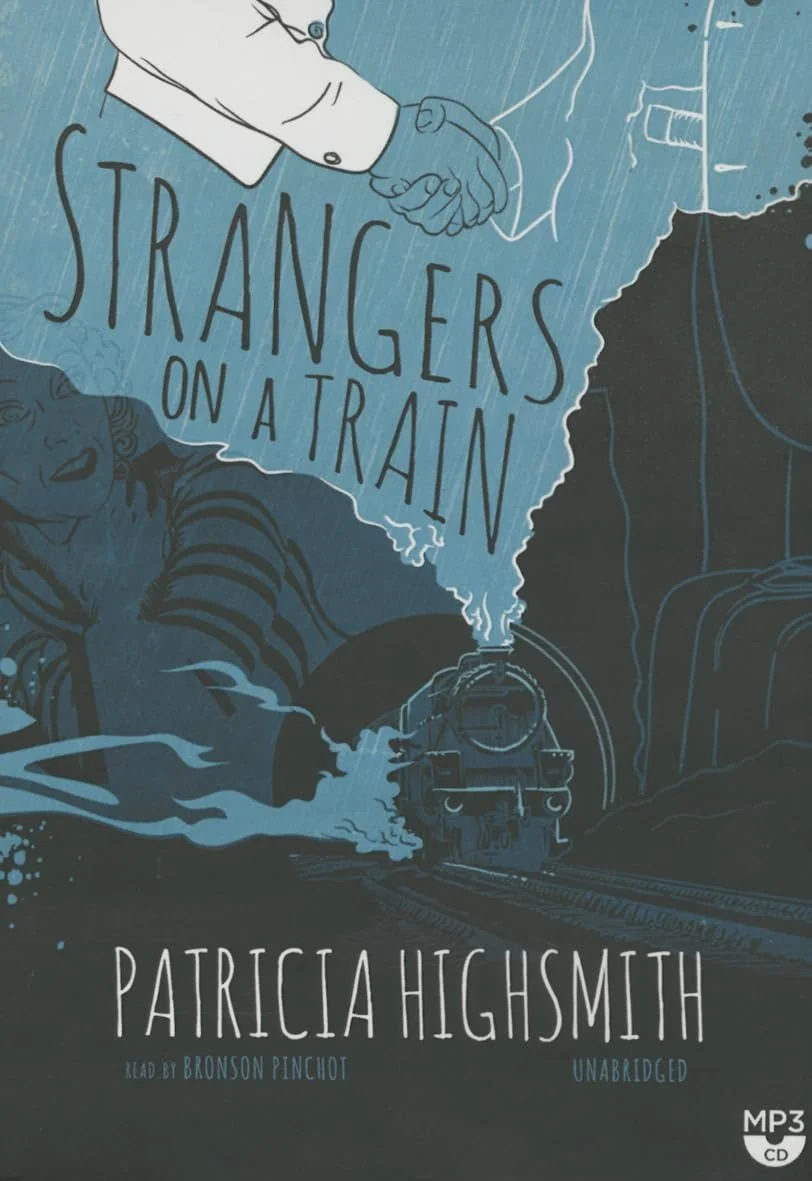A Dive Into the Mind of Patricia Highsmith…
I recently had one of those delightful school holidays that led to me reading a huge amount, and I decided that this was so gripping it was worth a post. This is of course Highsmith’s debut work, and it took me right back to my university days when I watched the Hitchcock film Strangers on a Train as part of a wider unit on the auteur. At the time, I loved the sleek, suspenseful way the film built tension, but I’d never actually gone back to read the original novel until now (despite it being referenced in The Peep Show).
Going off Goodreads (never the most reliable forum for a trusted review), many people seem to prefer the Hitchcock film to the novel. Now that I’ve finished the novel I would beg to differ. It’s darker, it’s more psychologically intense and certainly far less concerned with tying everything up neatly. The premise is of course the same: two men meet on a train. Guy is a rising architect with a complicated personal life and much more to lose. Bruno is a charismatic but dangerously unhinged alcoholic drifter. Bruno proposes the perfect murder plot: he’ll kill Guy’s troublesome, divorce-seeking wife if Guy agrees to kill Bruno’s rich, controlling father. No motive, no connection, no way of being caught. Guy laughs it off, at the time, but Bruno doesn’t, asserting as he does that anyone is capable of murder.
While this was nothing new, I was surprised by how different the tone is compared to Hitchcock’s adaptation. While the film adds some black comedy and Hollywood gloss, the novel leans more into ambiguity and moral unease - many uncomfortable scenes culminate in Bruno getting blackout drunk and losing his grip on reality. Of course one is led, at least initially, to sympathise with Guy, who clearly isn’t just a victim. The novel forces us to come to terms with his slowly decaying integrity under the watchful eye of the insatiable family detective Gerard.
Reading this reminded me why Highsmith is such a singular voice in psychological fiction. I have also been dipping into her lesser known short story collection Eleven recently - partly for pleasure and partly as it makes excellent source material for devising reading lessons. This reading was fresh in my mind as I read, and just reinforced this incredible knack for exploring the darkness in ordinary people. No other author I have read has been able to use such ordinary situations to make my skin crawl. In The Heroine, for instance, a young nanny’s desire to be loved tips chillingly into madness - much like Bruno’s desire to be understood, or Guy’s craving for a clean, uncomplicated life. In ‘The Snail Watcher’, she makes something as marginal and innocuous as a snail colony into a dangerous collective, such that they rise and kill an unwitting, distracted protagonist.
Detective convention aside, I suppose what is most fascinating is that Highsmith doesn’t simply write heroes as heroes and villains as villains. She writes people. She writes about the deeply flawed, often unknowable and sometimes terrifying aspects of the world. Whether working in long or short form, she is always asking the same question: how thin is the line between order and chaos, reason and obsession and right and wrong?
It’s that unsettling, quiet menace that keeps me coming back. I highly recommend her work and I do not doubt that I will be delving into more of her work soon.
Eleven by Highsmith is a great source of extracts for English Literature and will definitely be appearing in more of my lessons for reluctant readers.

